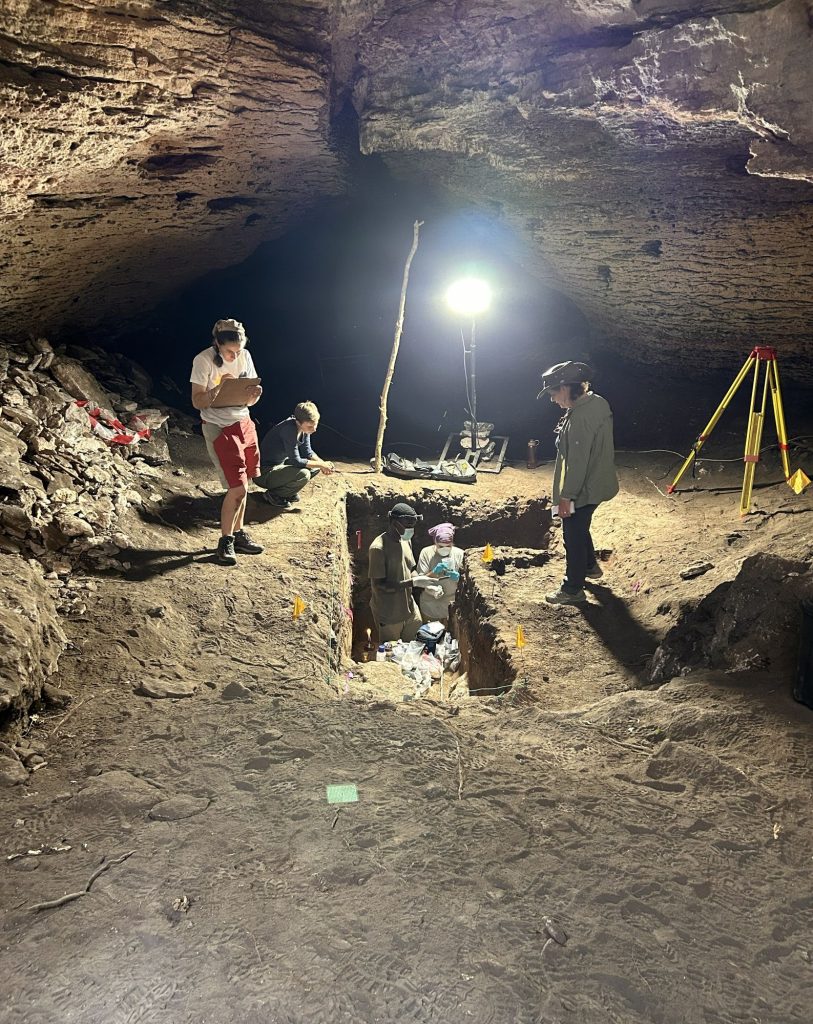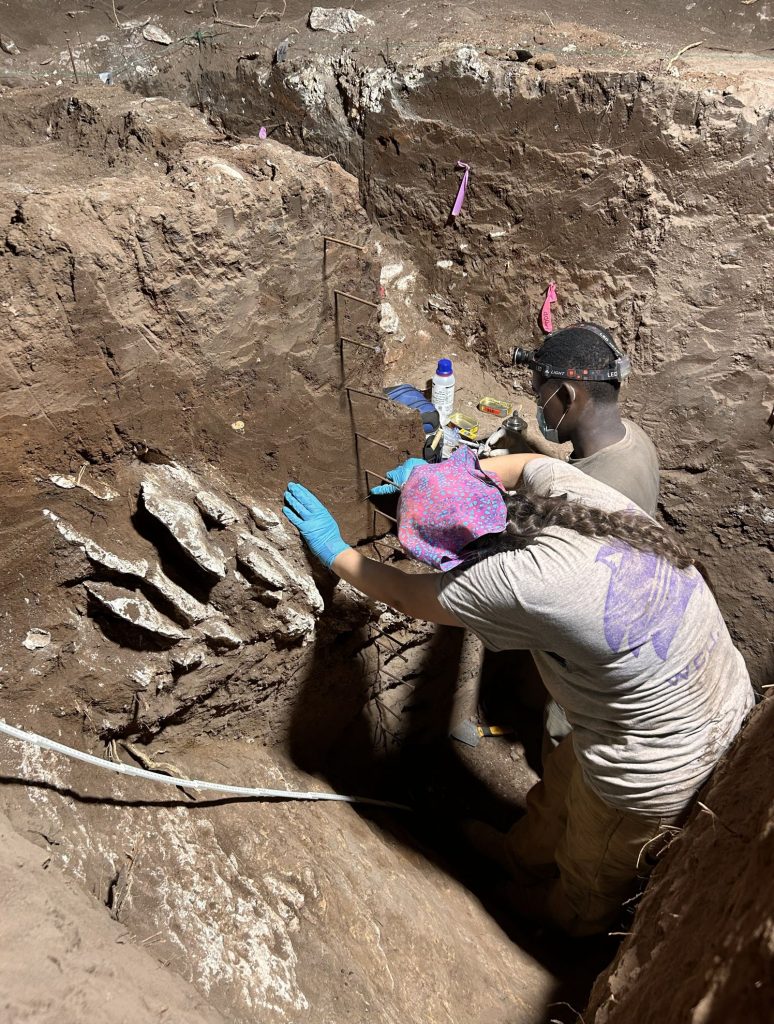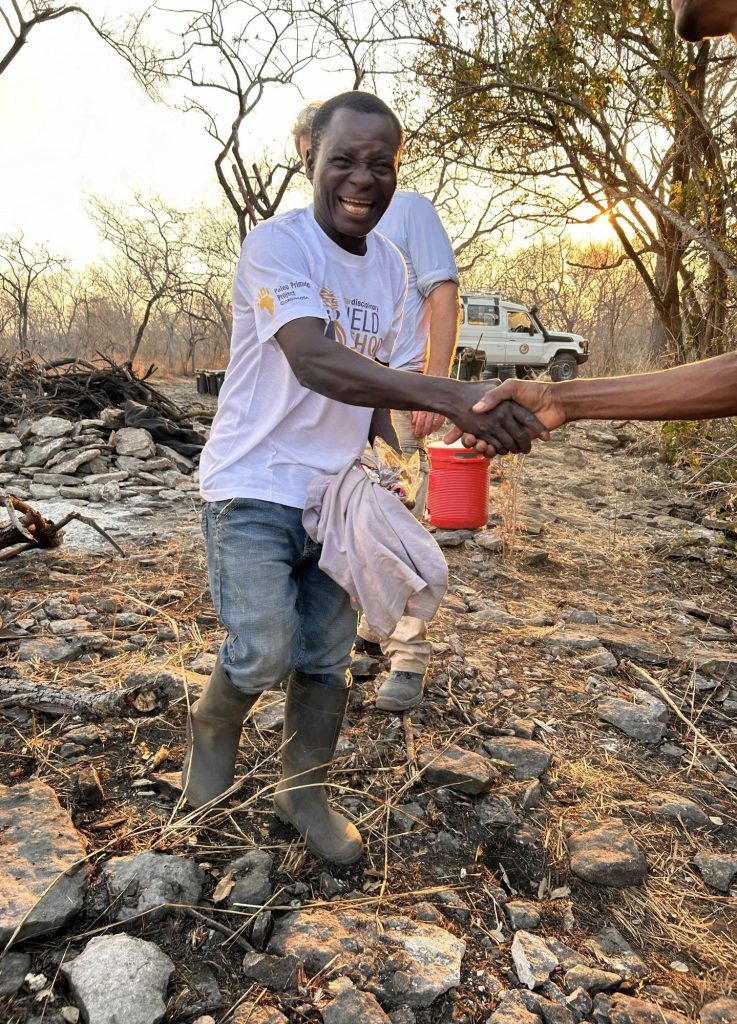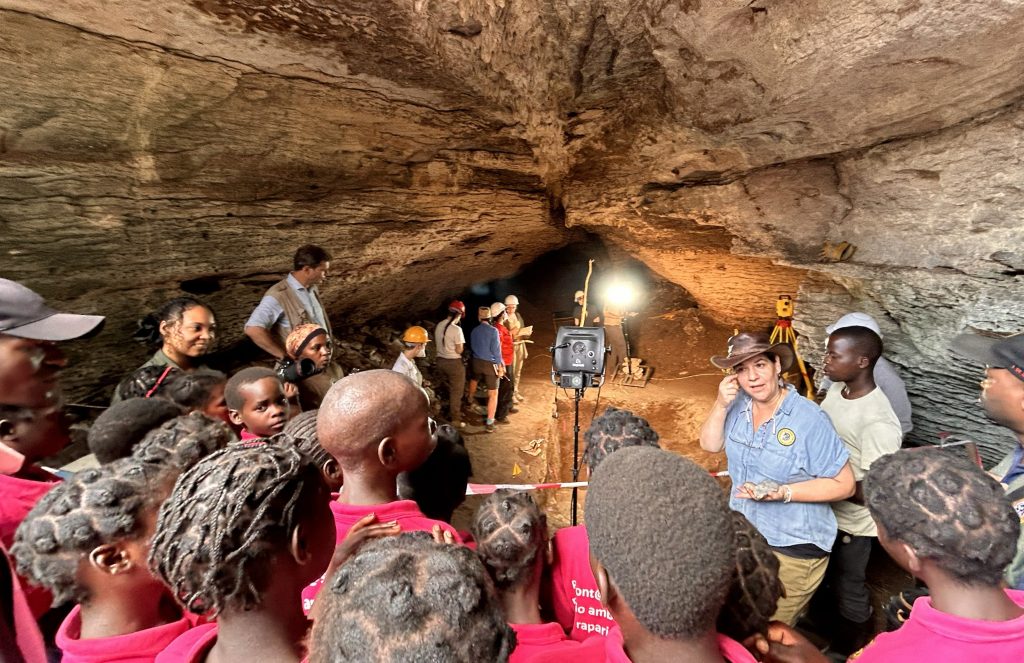In October, the Paleo-Primate Project Gorongosa (PPPG) team took its first steps underground by launching the first-ever cave excavation on the Cheringoma Plateau, in central Mozambique.
Working deep within the Urema Rift, the last unexplored branch of the East African Rift System, our team uncovered evidence of human ancestors life tens of thousands of years old: stone tools, animal bones, traces of ancient hearths, and fragments of pigment.
The site, called Tombo Aphale 5 (TA5), was found through a remarkable collaboration between scientists, cavers, and the nearby community of Tombo. It’s the first stratified Stone Age cave site ever discovered in the region, and it’s already reshaping what we know about human prehistory in this long-overlooked corner of Africa.




Why Here, Why Now
Most of Africa’s iconic Stone Age sites—Blombos, Diepkloof, Sibudu—lie thousands of kilometers south. Central Mozambique has remained largely a blank spot on the map, not because it lacks history, but because conflict and remoteness kept researchers away for decades.
Now, Gorongosa National Park’s unique mix of conservation, science, and community infrastructure makes it possible to do the kind of long-term, careful work that was once impossible. The Cheringoma caves may help fill a critical gap between East and Southern Africa, showing how early humans adapted and thrived across Africa’s diverse landscapes.
Science Meets Chaos
Excavating a cave in Mozambique is not for the faint-hearted. The team’s imported specialized rock charges (classified as explosives) were supposed to open new sections of older sediments, preserved by collapsed limestone blocks. After a complex logistics saga involving customs, clearances, and DHL, the verdict was simple: the limestone was too soft. The charges didn’t work.
So, back to basics. Big hammers and jackhammers took over, echoing through the cave as guano dust filled the air. “If the smoke don’t get our lungs, the cave’s air will,” after wildfires repeatedly surrounded and forced us to evacuate the site.
It was fire season on the Cheringoma Plateau, and between smoke, bats, and bureaucracy, the fieldwork demanded as much endurance as ingenuity.
Teamwork and Training
The excavation brought together an interdisciplinary group of spleologists, archaeologists, geologists, biologists, and palaeontologists, alongside Mozambican students and local workers from Muanza and Inhaminga. For many, it was their first time in a cave or even their first trip outside their home district.
As part of PPPG’s ongoing outreach, Girls Clubs introduced local youth to science, conservation, and archaeology. The project’s educational focus means every discovery is shared not just among scientists, but with the communities whose history lies beneath their feet.

Looking Forward
TA5 is only the beginning. The surrounding landscape holds hundreds of unexplored caves that may contain equally rich evidence of ancient life. The PPPG team plans to expand research, strengthen Mozambican student training, and continue working closely with local communities.
Each shovelful at Tombo Aphale 5 brings us closer to understanding how modern humans evolved, adapted, and lived along the Urema Rift, a place where ecology and deep history meet.
